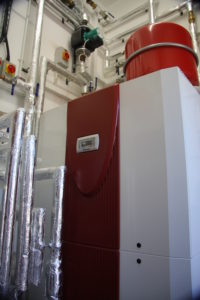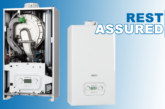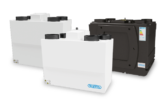
Chris Stammers, product marketing director for Dimplex, considers the technical considerations that housebuilders must make before planning a ground source heat pump installation.
With ever-changing energy targets on new homes and continued incentives to go green, more and more housebuilders are turning to renewable energy. The Code for Sustainable Homes and zero carbon homes plan may have been scrapped, but that hasn’t stopped the Government from setting strict guidelines on the sustainability of new homes within both the National Planning Policy Framework (NPPF) and Building Regulations.
So why renewables? Around 60% of energy in the home is used for space heating and with a greater understanding of renewable heating technologies comes greater opportunities.
One such technology is a ground source heat pump system; a proven, eco-friendly and cost-effective solution to deliver lower heating bills – and perfectly suited for new build developments where vast expanses of land are often available during the construction stage.
By incorporating ground source heat pump systems into their schemes, housebuilders can show their sustainability credentials and deliver lower bills for buyers – a win-win situation for builders, their customers and other stakeholders such as housing associations that might be involved in a new development.
Going green
A ground source heat pump system comprises of three elements; a ground heat exchanger which collects energy from the ground; a ‘brine’ to water heat pump, which raises the heat from the ground collector to a useful temperature and transfers it to the heat emitters; and a heat distribution system which provides heat to the property.
There are a number of considerations that must be taken into account – and housebuilders must be aware of the implications before they invest in the technology. These include…
Energy consumption
Ground source heat pumps can be used to feed individual properties, or as part of a communal heat pump system feeding multiple properties from one, larger heat pump. The required energy consumption of all receiving properties will have a bearing on the size and location of the ground source heat pump system, together with extraction rate and design of the collector.
Building energy profiles, i.e. determining the balance of cooling/heating loads, is  important. Once modelled in the various software packages available, the number of boreholes could be reduced – and with costs of around £45 per metre for a bore drilled to 100 metres deep, fewer boreholes can mean substantial savings for developers.
important. Once modelled in the various software packages available, the number of boreholes could be reduced – and with costs of around £45 per metre for a bore drilled to 100 metres deep, fewer boreholes can mean substantial savings for developers.
Geology
Depending on the geology of the development site and amount of available land, collectors can be laid either horizontally or via boreholes. A British Geological Survey report can provide many of the answers surrounding geology, whilst a TRT (Thermal Response Test) can establish whether more or less boreholes are needed once the geology is known – and create potential for further cost savings.
Ground temperature
Energy is extracted from the ground using one of a number of different types of collector and transferred to the heat pump system. As the heat is extracted, the ground temperature will drop, so it is important to make sure that the brine outlet temperature does not fall below 0o.
Types of collector system
The most common type of system in the UK is an indirect closed loop system, where a water/glycol mix is circulated through the collector, transferring the energy from the ground to the refrigerant via the internal plate heat exchanger of the heat pump.
Other systems – although less common – include a direct closed loop, direct open loop and indirect open loop.
“By incorporating ground source heat pump systems into their schemes, housebuilders can show their sustainability credentials and deliver lower bills for buyers.”
Horizontal collectors
Horizontal collectors are typical to low capacity systems because of the land area required, but can be incorporated into new housing development sites at an early stage in the build.
One of the most common applications in the UK, a horizontal collector is a closed pressurised system comprising of a header pipe connected to individual loops. Each loop, which requires balancing valves or ‘reverse return’ connections to ensure an equal flow rate, will be buried in trenches at approximately 1.5m deep and 0.75m apart.
Boreholes
If boreholes are deemed the most suitable option, they are typically drilled to 100m depth, although they can be drilled up to 200m. Each borehole will consist of a single or double U tube (electro-fusion welded), a sacrificial head (weight) and a tremie pipe (to pump bentonite grout mixture to seal the borehole). Consideration should be given to spacing (minimum 6 metres) and the direction of ground water flow (re-charging).
TOP TIPS
Dimplex gives its top four tips when specifying a ground source heat pump solution for new build properties:
• Always appoint a specialist ground source heat pump contractor. Choose from manufacturer approved installer networks or search for members of the Ground Source Heat Pump Association (GSHPA).
• Speak with your manufacturer of choice for advice. They can help you and your installer to understand the product limitations and unique benefits, including any safety features.
• Choose proven technology. Like any technology, cheap imports are available, but it is important to understand the impact that a low-efficiency ground source heat pump system will have on running costs for homeowners.
• For open loop systems use intermediary heat exchangers with glycol (antifreeze) wherever possible. Ruptured heat exchangers in the product will ruin the entire unit.








